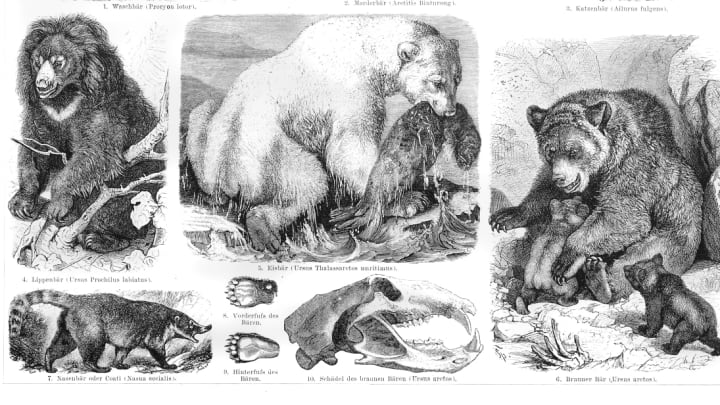There are lots of different systems of scientific names with different conventions or rules governing them: chemicals, genes, stars, archeological cultures, and so on. But the one I'm familiar with is the naming system for animals.
The modern naming system for animals derives from the works of the 18th-century Swedish naturalist Carl von Linné (Latinized to Carolus Linnaeus). Linnaeus introduced the system of binominal nomenclature, where animals have names composed of two parts, like Homo sapiens. Linnaeus wrote in Latin and most his names were of Latin origin, although a few were derived from Greek, like Rhinoceros for rhinos, or from other languages, like Sus babyrussa for the babirusa (from Malay).
Other people also started using Linnaeus's system, and a system of rules was developed and eventually codified into what is now called the International Code of Zoological Nomenclature (ICZN). In this case, therefore, there is indeed an international standard governing naming conventions. However, it does not put very strict requirements on the derivation of names: they are merely required to be in the Latin alphabet.
In practice a lot of well-known scientific names are derived from Greek. This is especially true for genus names: Tyrannosaurus, Macropus (kangaroos), Drosophila (fruit flies), Caenorhabditis (nematode worms), Peromyscus (deermice), and so on. Species names are more likely to be derived from Latin (e.g., T. rex, C. elegans, P. maniculatus, but Drosophila melanogaster is Greek again).
One interesting pattern I've noticed in mammals is that even when Linnaeus named the first genus in a group by a Latin name, usually most later names for related genera use Greek roots instead. For example, Linnaeus gave the name Mus to mice, and that is still the genus name for the house mouse, but most related genera use compounds of the Greek-derived root -mys (from μῦς), which also means "mouse." Similarly, bats for Linnaeus were Vespertilio, but there are many more compounds of the Greek root -nycteris (νυκτερίς); pigs are Sus, but compounds usually use Greek -choerus (χοῖρος) or -hys/-hyus (ὗς); weasels are Mustela but compounds usually use -gale or -galea (γαλέη); horses are Equus but compounds use -hippus (ἵππος).
This post originally appeared on Quora. Click here to view.
